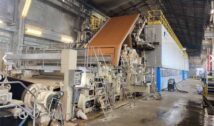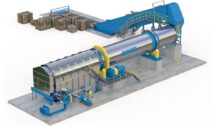
Global operating income will fall 2%-4% over the next 12 to 18 months – Input costs are rising, while demand for paper and prices for wood product and market pulp are falling
The outlook for the global paper and forest products industry has been changed to negative from stable, Moody’s Investors Service says in a new report. Global operating income will decline over the next 12 to 18 months, as wood product and pulp prices ease from recent peaks.
“The negative outlook for the global paper and forest products industry reflects a 2%-4% decline in industry operating income over the next year or so,” said Ed Sustar, a Moody’s Senior Vice President. “Increasing paper packaging prices and demand for paper packaging and pulp will only partially offset rising input costs, declining demand for paper and lower wood product and market pulp prices.”
The outlook for the paper packaging and tissue subsector remains stable, Sustar adds. Most Moody’s-rated paper and forest product companies will generate modestly stronger operating earnings this year as growing demand and higher prices across several substrates offset escalating labor and freight costs.
Moody’s outlook for the paper subsector and the timber and wood product subsector both remain negative. Although capacity reductions through paper mill/machine closures or conversions likely will exceed demand declines in 2019, higher prices for several paper grades will be more than offset by falling demand. Meanwhile, prices for wood products will drop back to more normal levels this year, while US housing starts will be flat, limiting demand growth for wood products and harvesting of timberlands.
The outlook for the market pulp subsector has also been changed to negative from stable, Moody’s says. Average prices across most pulp grades this year will decline from the peaks reached in 2018.
Higher than usual pulp supply at the start of 2019 has led to price declines across most grades, though limited new pulp capacity growth this year will partially reverse price declines during the second half of the year
































